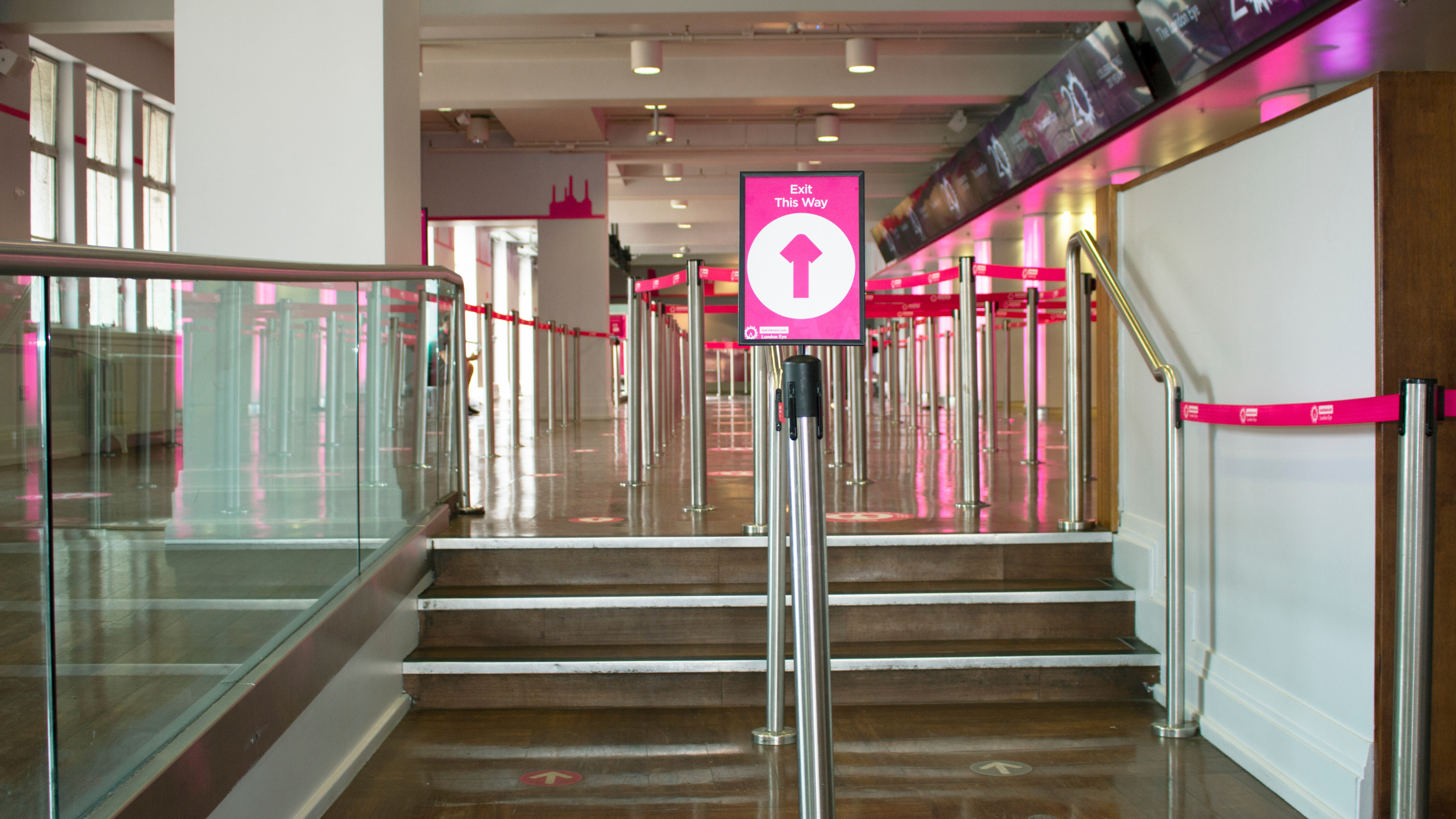- Home
- Sectors
- Solutions
- Tensabarrier®
- Tensator® Charging Stations
- Tensamedia® Wayfinding and Signage
- Lawrence® Post & Rope
- Tensator® Airport Passenger Guidance System
- Electronic Queuing – eQ™
- Tensaguide® Modular Barrier System
- Tensator Micam Protection – TMP
- Safety Solutions
- Access Control
- In-Queue Merchandising
- Virtual Queuing – VQMS
- Tensator® Virtual Assistant
- Custom & Bespoke Solutions
- Resources
- About
- Contact Us
- Shop
 English (English)
English (English)
Tensator survey reveals shoppers’ self-service frustration
15
Oct

Press release
Tensator survey reveals shoppers’ self-service frustration
MILTON KEYNES, UK, 14 October 2013 – Retailers need to up their game when it comes to self-service checkouts – that is according to the results of a new consumer survey from queue management and customer journey specialist Tensator.
The study has revealed that one in three shoppers (out of nearly 400 polled) have walked out of a store without buying the goods they intended to because of a bad experience with a self-service till.
With a staggering 84% of those questioned admitting to needing staff assistance when using a self-service checkout, it is hardly surprising that nearly 60% of customers actually prefer using more traditional staffed tills.
Other statistics revealed by the survey from Tensator include:
•Over 40% of respondents cited technical glitches as the most annoying aspect of self-service tills.
•More than half of the shoppers questioned believe that the transaction time at self-service tills is actually slower than manned checkouts.
•Over 50% of consumers complained that they weren’t sure where the queue started at self-service payment points.
The study also uncovers what customers think about when waiting in line, with 32% admitting that they spend the time make assumptions about the person in front of them in the queue. Perhaps more interesting to retailers is the fact that 26% say they use the time to think about how their overall shopping experience can be improved.
Cathy Barnes, Professor of Retail Innovation at Leeds Metropolitan University, believes that the survey should act as a warning to retailers:
“This research makes very interesting reading against the backdrop of growing online retail sales, where queuing and the checkout experience is so different. Shops need to pay increasing attention to the experience they provide in store to ensure they do not drive consumers away to competitors or other channels.
“The results show that there is significant dissatisfaction with both queuing and current self-service till systems and there is a real opportunityfor innovation in this area”
For Alan McPherson, CEO of Tensator Group, the results make for interesting reading:
“Go in to any major high street store and the emphasis is very much moving towards self-service, but retailers need to ask themselves if they are getting it right.
“This survey highlights a number of areas for attention. Firstly, if such a high number of shoppers need help when using self-service tills, retailers need to be looking at the technology they use and the way it’s being presented to the consumer. If so many people need help, its not self-service.
“Queuing also seems to be a problem, with shoppers not clear on where the line arts and if it’s actually one queue or two. Retailers spend a lot of money on queuing systems for staffed checkouts, with elements such as electronic call forward systems and in-queue merchandising, but queues for self-service areas are actually quite basic.
“Thirdly, with so many shoppers preferring to be served by a member of staff, managers need to be looking at the queuing systems they have in place at their staffed checkouts to make sure they’re performing to the best of their ability.
“No retailer wants to lose customers, but it seems that many are.”



